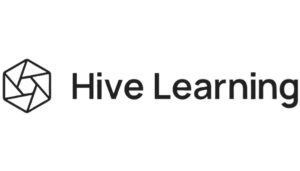HRD Roundtable Report: The Future of the Hybrid Workforce: Culture, Leadership and Practicalities
- 8 Min Read
While the idea ‘back to the office’ doesn’t ring true for the wide variety of experience had during the pandemic, as restrictions ease organisations are faced with decisions on what their future workforce and workplace should look like. From higher level redesigning of culture to more immediate decisions of who needs to be in the […]
- Event Types
- Date of Event: Oct 21, 2021


While the idea ‘back to the office’ doesn’t ring true for the wide variety of experience had during the pandemic, as restrictions ease organisations are faced with decisions on what their future workforce and workplace should look like. From higher level redesigning of culture to more immediate decisions of who needs to be in the office and when, how can we develop long term workforce strategies that don’t feel like stopgaps or temporary measures?
It’s possible that hybrid will be the word of the year – the challenges of making hybrid and remote working successful have yet to be resolved, more than 18 months since the UK first went into lockdown and was told to work from home when they could. This roundtable aimed to delve into both the practicalities and philosophies of managing a hybrid workforce. The way we talk about hybrid often slips into seeing it as the default option, but it is often not that simple depending on the needs of your employees and of your business.
This session was moderated by Perry Timms, Founder and Chief Energy Officer, PTHR and he was joined by Rich Bye, VP Product Strategy, Workday.
The Workday approach
The Future of Work model is central to the way Workday is approaching hybrid work. This looks at the way we work more broadly than just the hybrid question – the focus is on creating flexible models centred around the personas within their organisation. Those that:
- Have to be in the office 100% of the time to be able to work – e.g., for access to tools or security coverage
- Should be in the office 60% of the time over a 3-month period – this is untracked and can be carried out as best for the role. For example, they have an intense several week collaboration period, then the flexibility to complete their independent work at home
- Drop in – most of their work can be completed elsewhere but the office makes a good touchpoint, and they can hot desk whenever works for them
- Are very rarely expected to be in the office – this requires senior exec approval and would be a small group
Redefining the role of the manager
Do we value people management enough as a skill in who we promote into management roles? Or are we still promoting those who are good at their jobs but may not have the skills to support their teams? The pressure on managers is particularly high at the moment. Participants discussed whether they were actually training managers to succeed when measured by people management standards, on top of the other drivers we expect of their teams.
The group discussed an anecdote from Facebook, where they have regular check ins with their management teams to ask, ‘do you actually want to be a manager?’ Or would they rather a senior technical role that recognises their expertise, without putting them in charge of a team.
If we recalibrate our understanding of what it means to be a good manager, we can better solve other cultural issues and enhance employee wellbeing. Managers should be part of the ‘return to the office’ conversation – opening communication lines with their team members on what is needed, what is expected and how well the plan is working.
Workday for example are working closely with managers to be thoughtful about what and when they expect people to be in the office. It’s important to encourage managers to think about the best use of time when teams are together. Is the best use of time going over a report, or being creative? When and how people work is down to the manager discretion and is between the manager and their employee. This should be a conversation based on work needs, productivity and employee wellbeing. The risk is high – managers will need a lot of support in creating the right frameworks here. The goal is not for everyone to be the same, but for it to be just and inclusive.
On the purpose of the office
The office needs to have purpose and we need to recognise that our people’s time is valuable. We can’t expect people to come together and perform box-ticking exercises. The conversation needs to be about ‘where do you do your best work’ and not ‘how many bums are on seats’. Organisations need to take a flexible approach and can’t be too rigid or they will get bogged down in bureaucracy
Organisations also need to consider the workplace itself – is it set up for the tasks we want people to complete? Is there space for collaboration and innovation? How can we make the office a honeypot that attracts, rather than forcing attendance?
Involving employees in the decision
How do we create a meaningful culture of creativity, collaboration and connection? The group brought this back to being a conversational process, employee led process and the importance of asking employees ‘what does a great day in the workplace look like for you?’ That then gives a framework that can be further explored at a more strategic level.
One participant shared their ‘team charter’ concept for involving employees in the process – a document made by and for each team within their business. These charters are revisited frequently based on how well they work – focussing on outputs, not process.
One participant discussed their ‘philosophy of work’ approach. Their organisation has always been international with dispersed teams, so although a lot of their work was office based, they were used to working virtually. They are restricted by the conditions of the places they work (they may not have consistent internet access at home for example), as well as the kind of work that needs doing, but the focus is on employee choice. They were conscious that everyone has lived through a period of restricted freedoms, so allowing the freedom to work where works best for them is actually part of supporting wellbeing.
Presenteeism and trust
Alongside the performance management of managers, is the performance management of employees. Presenteeism is a real concern when we’re considering what workplace life should look like. There’s an assumption that ‘present’ is physical and that organisations will mistake those that are in the office the most as the most impactful on the business. In reality, managers and decision makers will also be virtual – perhaps even more so than their junior staff members. Will there be circumstances where the bias goes the other way? Where those that are better at communicating and collaborating virtually will be favoured?
The group also discussed the concept of trust – have we taken the time to recognise, explicitly, that we trust our employees to be productive? This is particularly important for organisations that previously were inflexible on working from home policies because it wasn’t seen as productive or possible to get the work done. Without trust, organisations and managers could easily slip back into presenteeism thinking – ‘I need to see you working to know you’re working,’ rather than recognising outputs. Trust needs to become part of the leadership model to change mindsets.
The workplace = office assumption
The group also delved into the idea of ‘back to the workplace’ itself as a concept that doesn’t apply to everyone. One participant shared their challenge where the majority of their workforce works on factory, warehouse and logistic centres and making sure they aren’t alienated from the conversation. Flexibility is limited for these employees, and it shows in contrast to the possibilities that can be looked at for their office-based teams. How do you create fairness in this environment? How do you develop a mindset of flexibility and ‘do what works for you’ when historically that hasn’t been encouraged at all?
Operational HR
At Workday returning to the office will be phased in order for people to feel comfortable with the change. No one will suddenly be expected to be working as their persona, but if for example they will be 60% eventually, they can start at 20% and get settled there. This is also expected to help weed out logistical issues slowly, rather than finding and needing solutions all at once.
There are also very practical considerations to make from an operational perspective. If we can truly ‘work anywhere’, what does that mean for tax? What does it mean for hiring and reporting lines? If a European team hires someone in the US, who is their operational manager? Working internationally is nothing new, but the potential scale of it moving forward has huge implications on how we think about talent and organisational design.








